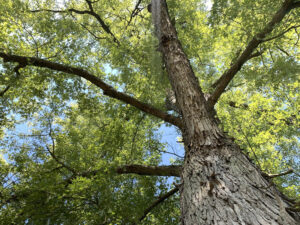How Your Trees Could Be Your Sewer Line’s Worst Enemy
In a place like North San Diego County, CA, there are many ways your home sewer line can become damaged. Clogs and corrosion can damage the pipe from the inside, causing backups and leaks in the line. Changes in water pressure can also place stress on a sewer line.
External form can damage a sewer line as well. In addition to soil erosion and seismic activity, tree roots are a leading cause of sewer pipe damage. Tree roots can damage your home’s sewer line through a process known as infiltration.
How Root Infiltration Can Damage Your Sewer Line
Most trees have vast networks of roots. These roots are attracted to sources of moisture and nutrients. A sewer line can provide both.
Tiny hairlike roots can penetrate into sewer lines through existing cracks, joints, or openings in the pipes. Even the tiniest of openings can provide roots access to the interior of a sewer pipe.
Once inside the sewer line, the roots begin to thrive in a nutrient-rich environment, growing and expanding, taking up more space within the pipe. As the roots grow, they can create blockages and obstructions which can lead to reduced flow and even complete blockage of the pipe. Even worse, the pressure exerted by growing roots can cause physical damage to the sewer pipes, including cracks, breaks, or misalignments in the pipes.
Preventing Root Infiltration
There are many steps local homeowners can take to reduce the risk of root infiltration.
- Regular inspections: Periodically checking the interior of your sewer line with video inspection equipment can help identify early signs of root infiltration.
- Root barriers: Root barriers made of materials tree roots can’t penetrate can provide effective protection to your sewer lines.
- Select the right trees: Any tree can sprout roots that can infiltrate a sewer line. However some are worse than others.
- Avoid trees like silver maples, sycamores, oaks, willows, and elms that have fast growing, aggressive root systems. Apple, avocado, hibiscus, pencil pine, and tulipwood trees all have slower growing root systems. Try and plant any tree at least ten feet away from your sewer line or water main.
- Replace the Sewer Pipe: If tree roots have caused significant damage, it may be necessary to replace the affected section of the sewer line with modern materials that are more resistant to root intrusion, such as plastic (PVC) pipes. New repair techniques, such as trenchless sewer line repairs, allow homeowners to replace a damaged sewer pipe without the need for extensive excavation.
- Chemical Treatments: Special chemical treatments can be applied to sewer lines to inhibit root growth. However, these treatments may need to be reapplied periodically and may not be environmentally friendly.
Trenchless Sewer Line Repairs in North San Diego County
If you’re experiencing persistently clogged or backed up drains, it could be a sign that you have a damaged or clogged sewer line. 1st Choice Plumbing, Flood & Restoration has been delivering dependable, affordable sewer line inspection, repair and replacement to homeowners in North San Diego County since 2012. Our team of licensed plumbing professionals has the tools and training to locate and repair just about any sewer line problem you may experience. We offer the latest in video inspections, hydro jetting, repiping, and trenchless sewer line repairs to quickly and efficiently address your sewer line problem without the mess and hassles of having to dig up your yard or pipes.
If you’re experiencing a sewer line problem in North San Diego County, contact 1st Choice Plumbing, Flood & Restoration as soon as possible. You can reach us through our website or call us at 866-437-0205 to schedule a visit from a North San Diego County plumber.










